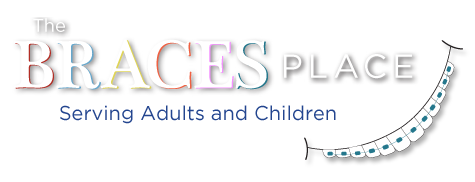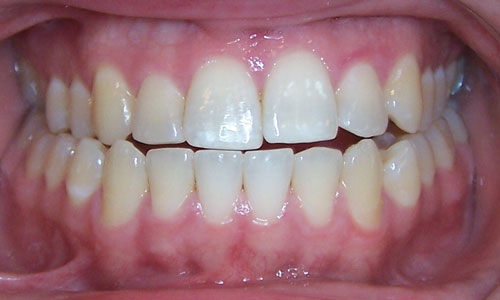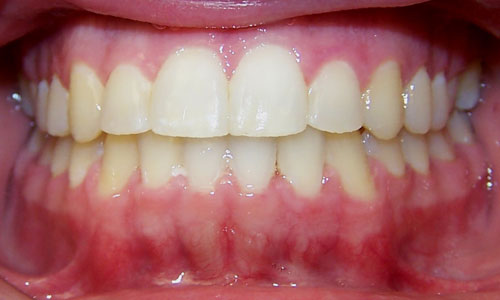WHO IS TOO OLD FOR ORTHODONTICS?
More and more adults are pursuing orthodontic care for a variety of reasons. Esthetic improvment, chewing improvement, pre-prosthetic care (pre-implant/ bridge), and TMJ pain/dysfunction.
Adult orthodontic practices commonly see patients in their 20’s, 30’s, 40’s, 50’s, 60’s, and even see some patients in their late 70’s and 80’s.
Patients that feel too old (you are as old as you feel) for orthodontics should consider hidden treatment options like lingual braces (for complex problems) or Invisalign (for simple problems).
ADULTS ARE DIFFERENT THAN CHILDREN:
While orthodontics is available to all ages, there is no question that adult treatment is far different from adolescent treatment. For the purposes of this conversation, adults are psychologically, physiologically, socially, professionally, and financially very different from children. As such, they must be treated differently in all aspects.
PSYCHOLOGICAL DIFFERENCES
Psychologically, adults are generally uncomfortable wearing silver braces and bands. They need less obvious solutions to their problems. High quality ceramic braces, lingual braces, Invisalign, esthetic aligners, esthetic retainers, etc. are all designed for the adult patient. Unfortunately, very few orthodontists are skilled at this variety of treatment modality, because most orthodontists treat primarily children. Orthodontists that treat primarily adults, however, tend to be more skilled at these treatment options (some more skilled than others).
Furthermore, adults are generally psychologically stressed in an office that makes them sit next to child/adolescent patients. It makes them feel like a child. Offices that cater to primarily adults eliminate this psychological issue. Furthermore, the offices tend to be more adult-friendly in the office environment and even decor. Many offices offer Wifi and internet stations in the lobby for patient efficiency/ productivity while waiting for an appointment.
PHYSIOLOGICAL DIFFERENCES
Physiologically, adults are quite different from children. To start with, adults are not growing! Adolescent orthodontics can take advantage of growth to make space/ build bone for tooth movement. Adult patients do not have nearly as much flexibility/ latitude in orthodontic care. Instead, the orthodontist must assess the existing bony framework that the adult has available for use during orthodontics.
Furthermore, adults have more involved dental work to deal with: Crowns, Bridges, Implants, Root Canals, Broken down teeth, multiple missing teeth, TMJ Dysfunction, and more. As such, adult oriented orthodontists must be equipped with supplies/equipment/know-how to manage these issues.
COMMUNICATION DIFFERENCES
Kids don’t ask complicated questions. In fact, kids rarely ask questions. Adult patients, on the other hand, question everything. A quality adult orthodontist is not just technically skilled, but is also a skilled communicator. Adults want to actively participate in their treatment, and this can be very uncomfortable for many orthodontists. Adult-oriented orthodontists are quite comfortable with this. While there are limits to the number of questions that can be answered, the adult-oriented orthodontist can comfortably and effectively answer the complex questions that the adult orthodontic patient may conjure up.
SOCIAL DIFFERENCES
While children are used to seeing each other in braces, adults are not. As such, adults are not as socially comfortable with braces. As such, the objective in adult treatment is to be as efficient/ fast as possible (to minimize this issue) and as hidden a treatment as possible.
PROFESSIONAL DIFFERENCES
Adults may feel comfortable with visible orthodontic treatment, but their careers may preclude them from pursuing visible treatment. For example, teachers are generally very uncomfortable in visible braces, as they feel like one of the kids. Similarly, CEO’s, salespersons, and many other appearance-sensitive careers may also find invisible treatments their only career-sensitive options.
FINANCIAL DIFFERENCES
Children don’t pay their own bills. As such, they are not as appreciative of the quality of their treatment. Since adults pay for their orthodontic treatment themselves, they are much more demanding. As such, adult-focused orthodontists are much more detailed in their work.
ADULT ORTHODONTICS – A SUB-SPECIALTY!
So many adults are pursuing orthodontic care that some orthodontic practices are virtually “sub-specialists” in adult care. These sub-specialty practices treat adults in a fashion that is more adult friendly.
Advantages of adult-oriented practices include psychological benefits, efficiency benefits, treatment option benefits, and improved treatment results.
If an adult is seeking orthodontic care, they may not want to just go to their community orthodontist. They may see major benefits from a regional adult-oriented orthodontist.
- best of findanorthodontist.info for an adult oriented orthodontist near you




